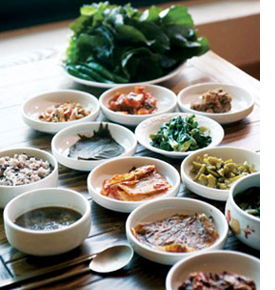 Traditional Korean culture has developed into a contemporary style, due to rapid urbanization and industrialization. Since you are in a different country, you may experience difference in values, customs and ways of thinking. It is important to have an open mind and try to adapt to the life in Korea. This will help your experience in Korea be more enjoyable. Traditional Korean culture has developed into a contemporary style, due to rapid urbanization and industrialization. Since you are in a different country, you may experience difference in values, customs and ways of thinking. It is important to have an open mind and try to adapt to the life in Korea. This will help your experience in Korea be more enjoyable.
A big part of a country’s culture is the food. Typical Korean meals consist of rice and different side dishes. Rice is a staple food in Korea and people usually eat them with soups, stews, vegetables, fried fish or meat. Kimchi is a popular side dish and it is made out of pickled radish and hot pepper flakes. There are different kinds of kimchi and the spiciness can be altered.
Koreans have placed an importance on table manners and observe their traditional table manners strictly. They dress properly and have good posture when they eat. They do not lift a spoon or chopsticks until their elders do so. Younger ones should not leave the table until their elders do. If they need to leave, they should ask to be excused first.
International cuisine is also rapidly becoming popular. There are many American, Chinese, Italian, French and Indian fusion restaurants all over South Korea. |